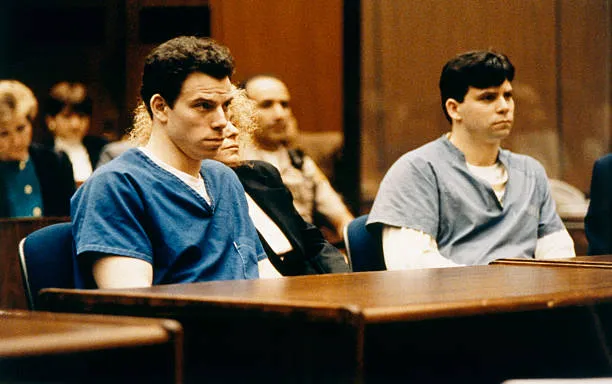The case of Gypsy Rose Blanchard and her mother, Dee Dee Blanchard, has been a topic of public intrigue for several years. This tragic story involves manipulation, child abuse, and ultimately, murder. The resurfacing of Gypsy Rose crime scene photos has once again sparked widespread conversation, drawing attention to the disturbing details of Dee Dee’s death and the complexities surrounding Gypsy’s role in it. From the public’s fascination with these graphic images to the ongoing debate about Gypsy’s life post-prison, this story remains as captivating as it is tragic.
The Background: A Life Marked by Abuse
Munchausen Syndrome by Proxy: Dee Dee’s Deceptive Control
At the heart of this story is Munchausen Syndrome by Proxy (MSP), a mental health condition that Dee Dee Blanchard suffered from. This disorder involves a caregiver intentionally creating or exaggerating medical conditions in a child to gain attention, sympathy, or financial benefit. Dee Dee manipulated doctors, family members, and the public into believing that Gypsy Rose was severely ill.
Gypsy was led to believe she had a variety of chronic illnesses, including leukemia, muscular dystrophy, and asthma, despite being healthy. Dee Dee went as far as subjecting her daughter to unnecessary surgeries and medications, which kept Gypsy isolated from the outside world. Over time, Gypsy grew more dependent on her mother, unaware of the full extent of the abuse she was experiencing.
The Murder of Dee Dee Blanchard: Gypsy’s Role
In 2015, after years of suffering under her mother’s control, Gypsy Rose Blanchard conspired with her boyfriend, Nicholas Godejohn, to murder Dee Dee. Dee Dee was stabbed 17 times in her home in Springfield, Missouri. The crime shocked the nation, as details about Gypsy’s abuse became public during the investigation.
While Gypsy did not directly carry out the murder, she was involved in planning it and was convicted of second-degree murder. Godejohn, who was arrested alongside Gypsy, was sentenced to life in prison for his role in the killing.

The Controversy of Gypsy Rose Crime Scene Photos
The Graphic Resurfacing of Crime Scene Photos
One of the most disturbing aspects of the case is the resurfacing of Gypsy Rose crime scene photos in the public domain. These images, which include graphic depictions of Dee Dee Blanchard’s bloodied body and the crime scene, have caused significant public outcry. While the photos were originally released through Freedom of Information Act (FOIA) requests and have been available for years, they recently went viral on social media platforms like TikTok.
The Gypsy Rose crime scene photos were rediscovered just days after Gypsy Rose’s 33rd birthday, which made the situation even more controversial. Social media users, some of whom were unfamiliar with the case, shared the photos in a dramatic and exploitative manner. The images, often accompanied by eerie music and sensational commentary, have sparked an ethical debate about the public’s right to view such graphic content.
Public Backlash and Ethical Considerations
The resurfacing of these photos has drawn criticism from those close to Gypsy Rose, including her ex-husband, Ryan Anderson. Anderson voiced his discomfort with the public’s fascination with the photos, emphasizing that everyone involved in the trial had already seen them. He also pointed out that Gypsy Rose has already served her time and should be allowed to move forward with her life without being continually haunted by her past.
April Johns, who once served as a spokesperson for Gypsy, also addressed the controversy surrounding the Gypsy Rose crime scene photos. In a TikTok video, she explained that while the images have been public for years, their recent viral spread indicates a lack of understanding about the case. She expressed frustration that these sensitive images are being shared without context and with a disregard for the emotional toll it takes on those involved.
Gypsy Rose Blanchard’s Life After Prison
Gypsy’s New Beginnings
In December 2023, Gypsy Rose Blanchard was released from prison after serving seven years for her involvement in her mother’s murder. Since her release, Gypsy has been adjusting to life outside of prison, and she has made several significant personal decisions. She filed for divorce from her husband, Ryan Anderson, rekindled a past relationship, and even announced her pregnancy in July 2024.
Despite her newfound freedom, Gypsy’s past continues to follow her. The renewed interest in the Gypsy Rose crime scene photos serves as a reminder that her traumatic history is never far behind. However, Gypsy has made it clear that she is determined to leave her past behind and focus on the future, particularly her role as a mother.
Gypsy’s Determination to Move On
Gypsy Rose has been vocal about her desire to move forward and build a life free from the shadow of her mother’s abuse. She has expressed excitement about her pregnancy, stating that she plans to give her child “all the things she wanted in a mother.” Despite her painful past, Gypsy is committed to providing a loving and supportive environment for her future child, hoping to break the cycle of abuse that defined her own childhood.
The Public’s Fascination with True Crime: A Double-Edged Sword
The Ethical Implications of Consuming True Crime
The fascination with true crime stories, especially one as horrific as the Gypsy Rose Blanchard case, raises important ethical questions. While the story itself is tragic, the constant circulation of Gypsy Rose crime scene photos and other graphic details for entertainment purposes highlights a growing trend of sensationalism in media consumption.
True crime has become a popular genre across television, podcasts, and social media. However, when the focus shifts to shock value and the exploitation of real-life suffering, it risks dehumanizing the people involved. In the case of Gypsy Rose, the resurfacing of crime scene photos not only brings pain to her and others affected by the tragedy, but it also risks trivializing the complexities of the case, such as the mental health struggles and the years of abuse Gypsy endured.
The Fine Line Between Justice and Exploitation
While there is value in discussing cases like Gypsy Rose Blanchard’s, it is essential to remember that victims and survivors are people, not just the subjects of a crime. As society becomes more desensitized to graphic content, it is crucial to draw a line between providing information and exploiting tragedy. This ethical consideration should guide how true crime stories are shared, ensuring that they do not further victimize those involved.
Conclusion: The Future of Gypsy Rose Blanchard
The case of Gypsy Rose Blanchard and her mother, Dee Dee Blanchard, is a powerful reminder of the devastating effects of abuse, manipulation, and mental health issues. While Gypsy has begun to rebuild her life after prison, her past continues to follow her, especially with the constant resurfacing of Gypsy Rose crime scene photos. These images, though widely available for years, have recently sparked renewed attention, prompting a debate about the responsibility of both creators and audiences in handling such sensitive content.
As Gypsy Rose looks to the future, she remains determined to break free from the trauma of her past and create a better life for herself and her child. In the end, it is up to society to approach this story with empathy and respect, acknowledging the complexities of Gypsy’s journey toward healing.
You Might Also Like:
Benzino’s net worth 2024: Exploring the Wealth of a Hip-Hop Mogul and
Natanael Cano net worth in 2024: How the Rising Star Earned His Fortune in
Blueface net worth 2024: Exploring the Rapper’s Wealth and Career Journey





